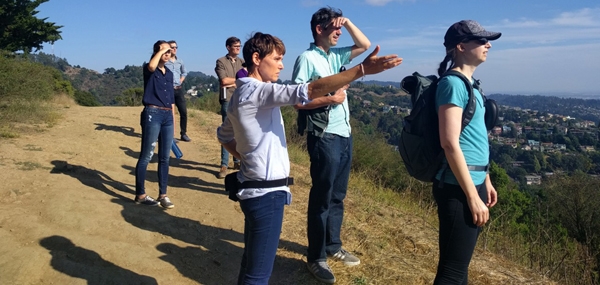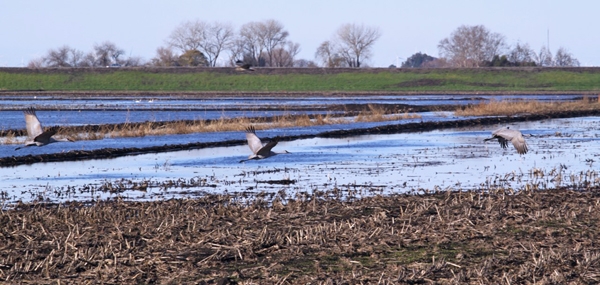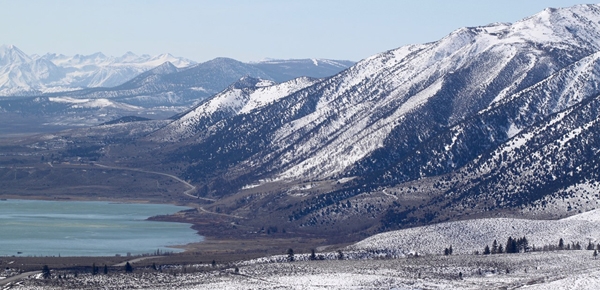Nell Green Nylen is a Senior Research Fellow with the Wheeler Water Institute in the Center for Law, Energy & the Environment (CLEE) at Berkeley Law. Her research engages law, science, and policy to tackle critical California water issues. Nell earned a J.D. from Berkeley Law and a Ph.D. in Geological and Environmental Sciences from Stanford.
You have done an incredible amount of research and policy work on some of California's thorniest water issues. Can you tell us a little more about your efforts?
Sure! During my time at CLEE, I've worked on everything from innovative stormwater management and the impacts of citizen enforcement under the Clean Water Act to sustainable groundwater management, water data, drinking water access and affordability, and state drought response. Although my work ranges widely, it all shares a common goal: informing decision making to improve water governance.
As an example, I led a report outlining considerations for evaluating whether, and under what conditions, a local groundwater market might be a viable tool for sustainably managing a groundwater basin. Because groundwater trading changes where, when, and how groundwater is pumped and used, it alters the social and environmental impacts of groundwater use. Our research suggests that while markets can contribute to sustainable management in some basins, success isn't assured. Careful market design and implementation are vital, including unambiguous trading rules developed with robust stakeholder engagement and effective oversight and enforcement.
Another area I've worked on is water system consolidation—essentially, merging aspects of two or more drinking water systems, or extending water service to those not connected to a public water system. Consolidations can create economies of scale that help address persistent water quality and reliability problems in small and disadvantaged communities, but the costs and benefits of different options have not been well documented. So, we held a workshop with stakeholders, decision makers, and outside experts to learn from past and ongoing consolidation efforts in California. Our workshop synthesis takes stock of these efforts, identifying both barriers to effective consolidations and potential solutions.
I'm also doing work to improve water rights administration and oversight during droughts. Droughts are likely to become more frequent and intense in the future, posing increasing challenges for water managers and raising the stakes for effective response. In a pair of reports, my colleagues and I examine how the State Water Resources Control Board (Board) carried out its water rights responsibilities during past droughts and offer recommendations for improvements. We focus on the Board because its actions—or inaction—during droughts can have significant repercussions for nearly every person, entity, and ecosystem around the state.
Our analysis suggests the Board often needed to improvise response strategies in the midst of drought crises. Taking proactive steps, like developing a contingency-based framework to support drought decision making, will enable more timely and effective future drought response. I've recently been working on a blog series about this where people can learn more about the problem and our recommendations for addressing it.
Given your work on such a wide variety of water issues, what do you see as some of the most important issues on the horizon?
What comes to mind are issues I feel need more attention and concerted effort from researchers and policymakers. These include better aligning water law and policy with scientific understanding, and developing better guidance for climate change adaptation.
For example, California water law maintains artificial distinctions between groundwater and surface water, creating challenges for holistically managing these interconnected resources. The Sustainable Groundwater Management Act (SGMA) takes small steps towards closing the gap by requiring groundwater managers to avoid causing “significant and unreasonable” impacts to beneficial uses of surface water—we have an in-press journal article about this—but there is much left to do. Additional legislative changes may help, but a lot of progress can be made by doing the difficult work of reconciling existing requirements and responsibilities under state and federal law.
There is also a need for more guidance to support what I'll call “managed adaptation.” Climate change will increasingly force decisions about whether to maintain certain land uses. These decisions involve important value judgments and are best made proactively and deliberately, based on considered analysis of the values stakeholders associate with the land use—such as its economic, cultural, and aesthetic values or its role in maintaining public health—and its resilience to potential threats.
The concept of “managed retreat” has, to date, largely focused on coastal adaptation to sea-level rise. However, many land managers will be facing other challenges in coming years, such as limited water supplies, inland flooding, wildfire, deferred maintenance, and dependency on carbon-based fuels. For example, the impacts of climate change on water resources will force decisions about how much—and which—land to remove from agricultural production over time. People are already thinking about this—for example, PPIC has written a recent report—but more guidance is needed to help decision makers and stakeholders think through their options and choose paths forward with foresight and intention. Otherwise, we might be looking at a future in which many decisions that affect lives and livelihoods are made passively, or put off until no good options remain.
You and your research group have been really successful at doing research that is relevant to decision-makers. Do you have tips for other researchers about how to do “useful” research?
There are many ways to do useful research, but I think two keys are targeting an area of need and creating research products that support complex decision making.
First, we always try to target our research to address important unmet needs. One context in which there are often opportunities to make useful contributions is in the aftermath of new legislation. Figuring out how to translate new laws into action can be challenging. Researchers can help those tasked with implementing a new law understand what their responsibilities are, the tools at their disposal, and the potential consequences of different implementation pathways. Those who are affected by new laws need access to similar information to help them participate in the decision making process.
Second—and I already previewed this—we generally steer clear of telling decision makers what specific choices to make. Instead, we try to identify considerations that should inform their thinking, and then present those considerations in an organized and useful way. This is especially important when the goal is to provide statewide guidance for a decision context in which local conditions, values, and needs may strongly influence potential outcomes, so there's no viable one-size-fits-all approach.
Our work related to SGMA is a good example. SGMA calls for the creation of local groundwater sustainability agencies in priority basins, tasks them with developing and implementing plans to achieve basin sustainability, and offers a broad palette of potential management tools. Right now, two state agencies and hundreds of local agencies are trying to figure out how to carry out their duties under the law. To help them, we developed guidance on local groundwater governance options, using local groundwater markets as a management tool, navigating groundwater-surface water interactions, the concept of recharge net metering, and understanding when groundwater recharge will be considered a “beneficial use.”
What do you find most interesting or challenging about working on California water issues?
Since California water issues are limitlessly interesting—and challenging—this is a tough one. I find the complex spatial and temporal linkages in California water management really fascinating. These connections mean that water management decisions made in one place or for one set of hydrologic conditions can have far-reaching consequences for people and ecosystems in other places and under other hydrologic conditions. This is why I recently wrote about how important it is to prepare for drought during wet years, like this one, at Legal Planet. As I say there: in the midst of the wet winter storms bringing rain and snow to California this year, you might not expect drought preparations to be among the state's current priorities, but they need to be.


